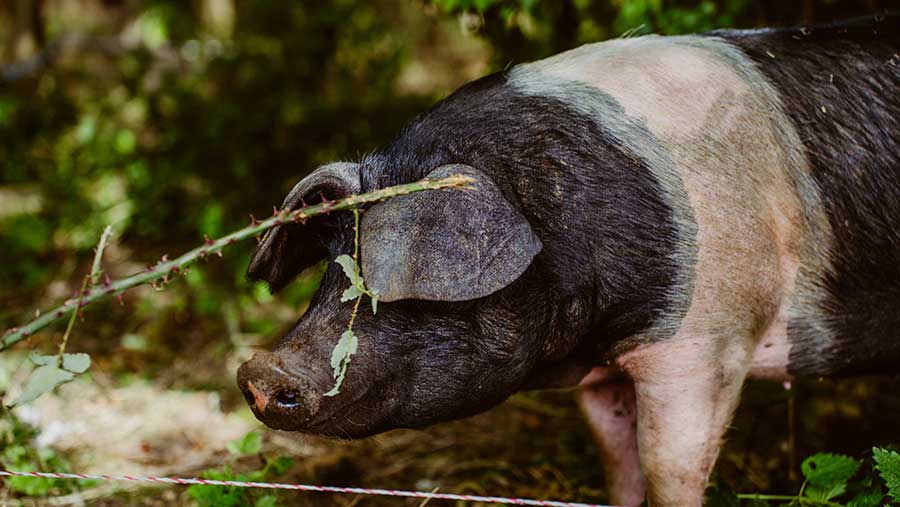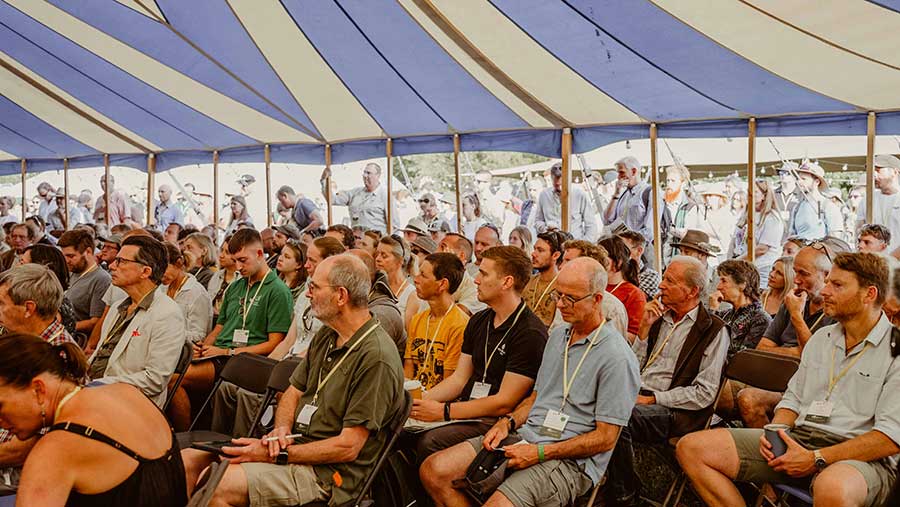Advertiser content
Agroforestry – moving towards a new norm
Provided by
Trees should be in every farmer’s toolbox. They boost productivity, resilience and the health of the environment – with no need to trade off with production.
If you’re looking to plant lots of trees, we have the trees, grants and funding schemes to help. Our expert advisers can help you put the right trees in the right place to achieve your goals.
Increase biodiversity, provide shelter, prevent soil erosion, reduce flooding and much more with the Woodland Trust.
Bringing more trees into farmed landscapes will make them more resilient economically and environmentally. The Woodland Trust is working with farmers to make the process of integrating trees into farms as easy as possible.

© Woodland Trust Media Library
At the moment, 70% of UK land is farmed, but only 3.3% of that practises agroforestry. Defra has publicly stated it wants to meet the Climate Change Committee’s recommendation of 10% of arable land in silvoarable agroforestry by 2050.
The Trust wants to go further still, as set out in our Farming for the future report. with 10% of arable land to be established with silvoarable, 10% of arable land to be planted with new hedges and shelterbelts and 30% of pasture to be established with silvopasture.
Trust research has shown that agroforestry can enhance and connect habitats and make an important contribution to tackling greenhouse gas emissions from farming, while maintaining (or even improving) productivity in arable and pastoral farming systems.
Trees tackle climate change and benefit business
We know from our decades of experience of working with land managers that many farmers worry about planting trees. They fear it could devalue their land, may mean sacrificing yield, or that the process will be costly and time intensive.
But with careful planning, this need not be the case and as farmers face the challenges of a changing climate, more are realising the benefits of trees as part of the solution. Provision of shade, shelter and browse can improve livestock health and performance in extreme weather, or enhance a crop microclimate to limit the impacts of drought by reducing evapotranspiration rates. These are just two examples of the many ways trees can help a farm adapt to a changing climate.
At the same time agroforestry offers an opportunity to enhance productivity and diversify into new crops. Alley cropping systems have proven to give greater productivity than monocultures. For example an apple and cereal based silvoarable system can deliver a Land Equivalent Ratio (LER) of 1-1.4 compared to monocultures. That’s a yield advantage of up to 40%.
No need for trade-offs
Agroforestry systems can avoid the potential trade-offs between food production and delivery of public goods such as carbon sequestration, that occur in many modern farming systems. The Trust is determined to make agroforestry accessible to as many farmers as possible, helping them reap the rewards of putting the right trees in the right place for the right reasons.
Many farmers feel they lack access to funding, skills and knowledge to successfully design, implement and manage an agroforestry system that complements their land and business. That’s why the Trust’s Trees for Your Farm scheme has provided advice and funding support to help farmers set up over 250 agroforestry systems in the last decade.
We also jointly organised the UK’s first Agroforestry Show in September with the Soil Association. The show, based on Eastbrook Farm, Wiltshire, demonstrated different types of agroforestry alongside an agroforestry design clinic and farmers sharing their first-hand agroforestry experiences.

© Woodland Trust Media Library
Get funding to join us at the forefront of research
Agroforestry must become a mainstream land use and play its role in helping tackle the climate and nature crisis whilst ensuring sustainable food production.
To get there, more work needs to be done and more improvements made. To help ensure future Government support for agroforestry is fit for purpose, the Trust is the project lead in a Defra-funded Environmental Land Management agroforestry test.
The aim is to test a range of advice and guidance structures with farmers throughout the process of designing their own bespoke agroforestry scheme. But we need more farmers to be part of it.
If your farm is in England and you would like to be at the forefront of developing new agroforestry schemes that could influence practices across the country, contact us at plant@woodlandtrust.org.uk.
Just tell us your farm location, type, size, and the type of agroforestry you’re interested in. Farmers will receive payment as a contribution for their participation, and your involvement could have benefits that reach far beyond your farm.
Alternatively, you can apply to plant through our Trees for Your Farm scheme. We’re currently accepting applications for planting between November 2024 and March 2025. Our expert advisors work closely with you to plan and design your bespoke agroforestry scheme, with funding for up to 100% of costs available. Email plant@woodlandtrust.org.ukto find out more and apply.
Whichever route you choose, you’ll be boosting your business, reconnecting wildlife habitats and locking up carbon to create a healthier future.
